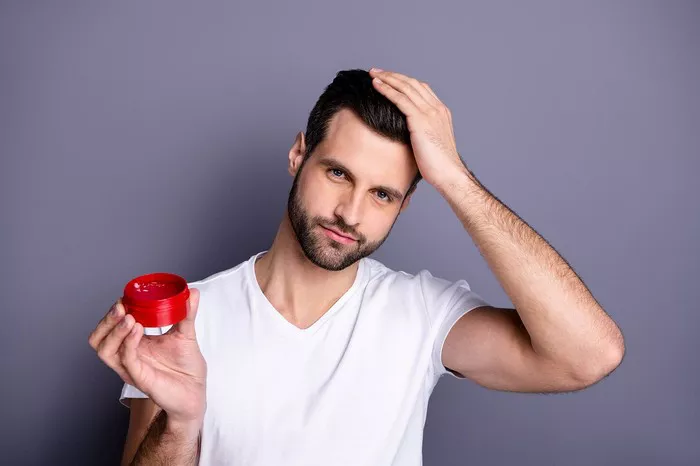Styling your hair with gel can provide a sleek and polished look, but it can also come with the risk of damaging your hair if not used correctly. This guide will help you understand how to use gel without causing harm to your hair, covering everything from selecting the right product to proper application techniques and aftercare.
Understanding Hair Gel and Its Ingredients
Types of Hair Gel
Hair gel comes in various formulations, each designed for different hair types and styling needs. The main types include:
Light Hold Gel: Provides a natural look with minimal hold. Suitable for fine hair and everyday styles.
Medium Hold Gel: Offers a balance between flexibility and hold. Ideal for most hair types and styles.
Strong Hold Gel: Delivers maximum hold for complex or structured hairstyles. Best for thick or unruly hair.
Common Ingredients in Hair Gel
Understanding the ingredients in hair gel is crucial to avoid damage. Key ingredients to look out for include:
Water: The primary ingredient, ensuring the gel spreads easily and washes out without residue.
Polymers: Provide hold and structure to the hair.
Alcohol: Helps the gel dry quickly but can be drying to the hair.
Silicones: Offer shine and smoothness but can build up over time.
Conditioning Agents: Moisturize and protect the hair.
Choosing the Right Gel for Your Hair Type
Fine or Thin Hair
For fine or thin hair, opt for a light hold gel that won’t weigh your hair down. Look for formulations with conditioning agents to add volume and moisture without making your hair greasy.
Curly or Wavy Hair
Curly or wavy hair benefits from medium to strong hold gels that define curls and reduce frizz. Choose alcohol-free gels with natural oils and moisturizers to keep your curls hydrated and bouncy.
Thick or Coarse Hair
Thick or coarse hair requires strong hold gels to maintain style throughout the day. Look for gels with humectants that attract moisture and prevent dryness.
Prepping Your Hair Before Applying Gel
Cleanse Thoroughly
Start with clean hair to prevent buildup and ensure the gel adheres properly. Use a gentle shampoo and conditioner suited to your hair type.
Condition and Detangle
Conditioning your hair provides a protective barrier against the gel’s potential drying effects. Detangle your hair with a wide-tooth comb to prevent breakage.
Towel Dry or Air Dry
Avoid applying gel to soaking wet hair. Towel dry gently or allow your hair to air dry until it’s damp but not dripping.
Applying Gel Correctly
Start with a Small Amount
Begin with a small amount of gel, about the size of a nickel or quarter, depending on your hair length and thickness. You can always add more if needed.
Distribute Evenly
Rub the gel between your palms to warm it up and distribute it evenly. Apply from the roots to the tips, ensuring every strand is coated.
Style as Desired
Use your fingers or a comb to style your hair as desired. For a more defined look, use a fine-tooth comb; for a tousled look, use your fingers.
See Also: How to Use L’Oreal Metal Detox at Home: A Step-by-Step Guide
Avoid the Scalp
Try to keep the gel off your scalp to prevent buildup and potential irritation.
Tips for Maintaining Healthy Hair While Using Gel
Avoid Overuse
Using gel every day can lead to buildup and dryness. Give your hair breaks between applications to breathe and recover.
Rinse Out Thoroughly
At the end of the day, make sure to rinse the gel out completely. Use a clarifying shampoo once a week to remove any residue and prevent buildup.
Deep Condition Regularly
Incorporate deep conditioning treatments into your routine to replenish moisture and keep your hair healthy. Look for masks with natural oils, proteins, and vitamins.
Protect from Heat Damage
If you use heat styling tools after applying gel, use a heat protectant spray to shield your hair from damage. Avoid excessive heat to prevent weakening your hair structure.
Choose Alcohol-Free Gels
Alcohol can be drying and damaging to the hair. Opt for alcohol-free gels that provide hold without stripping moisture.
Common Mistakes to Avoid
Using Too Much Gel
Applying too much gel can make your hair stiff and prone to breakage. Start with a small amount and add more if needed.
Applying to Dry Hair
Gel works best on damp hair. Applying it to dry hair can lead to uneven distribution and clumping.
Not Washing Out Gel
Leaving gel in your hair for extended periods can cause buildup and weaken the hair shaft. Make sure to wash it out at the end of the day.
Ignoring Your Scalp
Healthy hair starts with a healthy scalp. Keep your scalp clean and avoid applying gel directly to it.
Natural Alternatives to Hair Gel
Aloe Vera Gel
Aloe vera gel is a natural alternative that provides light hold and hydration. It’s suitable for all hair types and can be used alone or mixed with essential oils.
Flaxseed Gel
Flaxseed gel is rich in omega-3 fatty acids and provides a strong hold without the drying effects of traditional gels. It’s particularly beneficial for curly and wavy hair.
Shea Butter
Shea butter offers a natural hold and conditioning benefits. It’s best for thick and coarse hair, providing moisture and shine.
Conclusion
Using gel to style your hair doesn’t have to result in damage. By choosing the right product for your hair type, applying it correctly, and maintaining a healthy hair care routine, you can enjoy the benefits of gel without compromising your hair’s health. Remember to avoid common mistakes, consider natural alternatives, and treat your hair with care to keep it looking its best.


